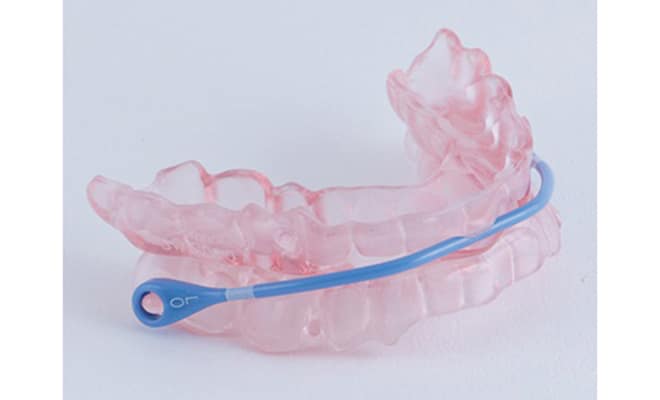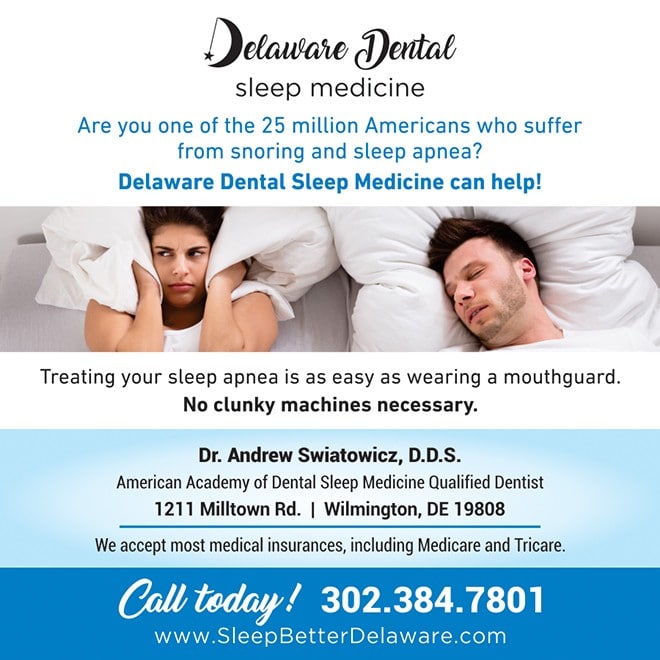How A Dentist Can Treat Your Sleep Apnea

By Andrew Swiatowicz, D.D.S
Obstructive sleep apnea (OSA) is a medical problem that occurs when a person’s airway is physically blocked while they sleep. This prevents them from breathing, usually causing them to snore and wake up. OSA is linked to a lot of serious complications, including high blood pressure, heart attack, stroke, diabetes, ADHD, and dementia. And most frightening of all, studies show that untreated OSA decreases life expectancy by up to 7 years.
The gold standard for treating OSA has been positive airway pressure, commonly known as CPAP. A patient wears a mask connected to a machine that pumps air into her lungs all night. Although effective, some studies show that more than 80% of patients choose to stop wearing CPAP after the first year.
Many patients are surprised to hear that their dentist may be able to help them improve their sleep hygiene. There are a variety of dental options available that can be as effective as, or supplement, CPAP for most patients. Here are a few of them.
Oral Appliance Therapy [OAT]
Oral appliances are a set of retainers that go over the top and bottom teeth, and hold the jaw forward while you sleep. This non-invasive treatment pulls the tongue off the back of the throat and widens the airway so you can breathe naturally, without a machine. Comfortable and effective, oral appliances are more likely to be worn by patients long term than CPAP. OAT is typically a dentist’s preferred method for treating OSA.

Orthodontics
A narrow and crowded jaw can make it difficult to breathe properly. Expanding the jaws gives a patient’s mouth space and increases the amount of room in our nose. Expansion is an option for both children and adults. Be warned though, widening the jaws will leave a significant gap in your front teeth, so you will need traditional braces to straighten them after.
Jaw Surgery
Oral surgeons can help you treat your OSA through jaw surgeries. By breaking and repositioning the jaws, surgeons can increase the space of the airway and help reposition the soft tissues that normally block the airway. Just like with orthodontic expansion, braces are typically required (before and after the surgery) to keep your teeth straight.
Frenectomy
In some people, there is a tight band of tissue, called a frenum, underneath their tongue that prevents it from moving — hence the term “tongue-tied.” The problem is when the tongue is held low and towards the back of mouth, it can easily block our airway. A frenectomy cuts this tissue, allowing the tongue to be more responsive. However, in some patients releasing a tongue tie can actually make OSA worse.
Myofunctional Therapy
Think of myofunctional therapy as physical therapy for the tongue and muscles that support the jaws. Strengthening these muscles through guided exercises can help correct bad “oral habits,” promote nasal breathing, and even help with facial pain. While not a quick fix, myofunctional therapy is a proven, non-invasive way to help patients suffering from OSA.
Next time you make a trip to the medical provider, talk to them about your snoring or sleep apnea. They should be able to refer you to a dentist who is trained on treating these problems. For more information or to schedule a consultation, call 302-384-7801 or visit www.SleepBetterDelaware.com.
Bio
Dr. Swiatowicz is a Diplomate of the American Board of Dental Sleep Medicine. His practice focuses on the treatment of sleep disordered breathing and craniofacial pain in children and adults. He works closely with a team of healthcare professionals to get you breathing and sleeping better.
Testimonials
“I have more energy now and I’m sleeping much better-Thank you!!” ~ A. McCloskey
“This office is very knowledgeable and efficient!” ~ L. Showell


